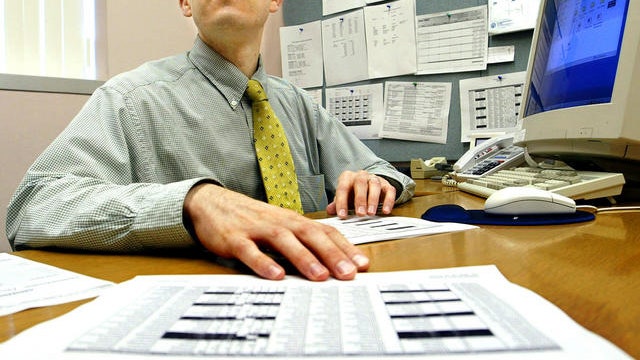Sitting and standing at work kills, experts say
Kyle Rothenberg talks to a representative from the American Cancer Society about the healthiest way to use your body at work
If you sit or stand at work, it could be killing you — according to many health professionals trying to figure out which is the healthiest option.
There are dozens of studies published in the past decade that report too much “butt-on-the-chair” time can shorten our lifespan and increase the risk of developing deadly illnesses, including cancer and obesity.
Harvard researchers found that the more time people spend sitting at work, driving or watching television, the more likely it is that they will die from heart disease and strokes.
Another study reveals that sitting most of the day increases the risk of dying from a heart attack by more than 50 percent, while cutting daily sitting time to under three hours might extend our life by two years.
But other specialists are suggesting that standing at work is also bad for our health.
“It dramatically increases the risks of carotid atherosclerosis…and it also increases the risks of varicose veins, so standing all day is unhealthy,” Alan Hedge, a certified professional ergonomist and professor at Cornell University said.
“The problem with standing [at work] is that when you raise desk height for keyboard/mouse use, you need to also raise screen height about the desk or you get neck flexion,” Hedge said. “Neck flexion” is the movement in which the chin is lowered down toward the chest.
Dr. Brian Kirby, a physical therapist, said the neck flexion type of position can lead to bulging discs, nerve compression and burning and tingling down the arms.
To combat the problem, more companies are installing desks with built-in treadmills at employee work stations, but Hedge notes it will likely slow down typing speed and increase errors at work. However, a study at the University of Minnesota’s Carlson School of Management reports treadmill desks are boosting productivity.
According to Shannon Skelton, a certified manual therapist, the solution as to how we should spend our day may be a combination of both sitting and/or standing.
“When you’re sitting, set an alarm or some indication every 15 to 20 minutes to get up and change your position,” Skelton said. “If you’re standing, you need to be dynamic. Shift your weight side to side, put one foot slightly in front of the other, and move your weight backwards and forwards just so you’re moving a little bit.”
The sitting and standing debate has even made its way into elementary school classrooms. When about 500 elementary students were given a standing desk with a stool in a Texas A&M study, more calories were burned.
“The students at stand-based desks burned 15 percent more calories during the study period than students at traditional desks, and obese children at stand desks increased their calorie use by 25 percent,” Mark Benden, a professor at Texas A&M Health Science Center School of Public Health said.
Whether your work requires you to sit or stand all day, experts suggest doing isometric exercises — which is basically squeezing and relaxing your muscles.
Dr. Alpa Patel, strategic director of intramural research for the American Cancer Society, suggests staying active even when you get home from work by doing chores like folding laundry while watching television.
“I don’t think people should overthink how much they should sit or stand. What’s important is just try to move when you can fit it into your day,” Patel said.





















